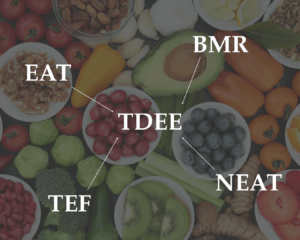The Truth About Why Women Need More Muscle: Strength, Metabolism, Longevity
Muscle plays a critical role in metabolic health and disease prevention.
It’s 2025 and yet I still encounter many women who avoid strength training, fearing it will make them appear less feminine and more bulky. Or, if they do weight lift it’s the focus is on light DBs and no intensity or grit. The truth about why women need more muscle? Building muscle enhances your metabolism, supports hormone balance, and promotes longevity …and yes, of course, it makes you strong and sexy, too.
Muscle is the body’s largest endocrine organ, and plays a crucial role in metabolic health and disease prevention. Let’s deep dive into some information backed by data that suggests without argument that anyone and everyone should pursue strength training.
If you are a woman who is reading this, yes, women need more muscle, including you. If you’re not a woman, please share this with the most important women in your life.
Strength Makes Life Easier
Bold yet truthful statement: When you are stronger, everything in life is easier.
From carrying groceries and moving furniture, to playing with your kids and staying independent as you age… strength gives you freedom. Women need more muscle because it builds physical resilience, protects your joints, improves posture, and boosts daily energy.
Strength doesn’t just change your physique or make your workouts easier, it changes how you move through your entire life with more ease, confidence, and capability.
More Muscle Means Better Metabolism
First, let’s breakdown Resting Metabolic Rate (RMR): Your RMR is the amount of energy (calories) your body uses at rest to maintain basic functions like breathing, circulation, and digestion. RMR accounts for roughly 60–75% of your total daily energy expenditure (TDEE).
Why is RMR important? Knowing your RMR helps you accurately estimate how many calories you need to maintain, lose, or gain weight. A very low RMR can sometimes signal issues like hormonal imbalances, under-eating, or chronic stress.
Factors that influence RMR include age, sex, genetics, nutrition, sleep, stress, and exercise and lean muscle mass.
Muscle tissue is more metabolically active than fat. This means protecting and building muscle helps support a higher RMR over time, helping to combat the natural decline in metabolism that comes with age. Strength training done correctly increases lean body mass. The more muscle you have, the more calories your body burns at rest, making it easier to maintain your physique, support metabolic health, and protect against weight regain.
Higher muscle mass also improves insulin sensitivity, making it easier for the body to regulate blood sugar. Strength training has been shown to reduce visceral fat, which is the type of fat stored around internal organs that is most closely linked to disease risk (1).
Quick Note: While often used interchangeably, Basal Metabolic Rate (BMR) and Resting Metabolic Rate (RMR) are not the same. BMR measures the minimum energy your body needs to perform essential functions in a completely rested, fasted state. RMR measures the energy burned at rest in more practical, real-world conditions, including light digestion or minimal movement. RMR is generally the more useful number when planning your nutrition and training.
Muscle Enhances Hormonal Health
Strength training plays an important role in supporting hormone function, especially as women transition through different life stages, particularly during phases like perimenopause and menopause when estrogen levels decline.
This decline in estrogen can lead to changes in body composition including decreased lean muscle mass, increased fat storage, decreased bone density, and a slower metabolism.
These hormonal changes can also contribute to symptoms such as fatigue, mood disturbances, disrupted sleep, and an increased risk of insulin resistance.
The time to focus on strength training as a woman to support your hormones later in life? Your 20s and 30s. It’s never too late to start, but the best time to incorporate strength training into your life if you haven’t already is… today.
Here’s how strength training supports better hormonal health in women:
Muscle mass improves insulin sensitivity, which helps regulate blood sugar levels and reduce fat storage.
Resistance training stimulates growth hormone and IGF-1. Two hormones that aid in muscle growth, tissue repair, and fat metabolism.
Regular strength training workouts can help lower chronic stress, thus reducing its negative impact on body composition.
By preserving muscle mass, you also protect bone density, reducing the risk of osteoporosis and fractures later in life.
Research shows that women who prioritize strength training during midlife maintain better body composition, stronger bones, and a healthier metabolism compared to those who rely only on cardiovascular endurance exercise or dieting alone (2).
Muscle Promotes Longevity
Maintaining lean muscle on your body isn’t only important for aesthetics as you age, but it also plays an important role in how well you age.
Low skeletal muscle mass, sarcopenia, is strongly associated with higher rates of chronic disease, functional decline, and early mortality (3). Muscle acts as a reserve and protector of your metabolic health, mobility, and independence as you get older.
Here are five ways increased muscle promotes longevity, and are hopefully the last examples to help convince you to either 1) stick with the routine you have 2) starting a strength training program ASAP:
1. Strong muscles allow you to perform daily activities (walking, climbing stairs, lifting groceries) without assistance. The stronger you are, the longer you will be able to be independent in life.
2. Maintaining muscle mass improves balance, stability, and joint integrity, lowering the risk of serious injuries like hip fractures.
3. Increased muscle helps the body manage blood sugar, cholesterol, and inflammation. These are all factors in preventing heart disease, diabetes, and age-related cognitive decline.
4. Muscle serves as a reserve of amino acids, which are crucial for immune system repair and response during illness or injury.
5. More muscle mass is linked to better recovery outcomes after surgeries, hospitalizations, and periods of illness.
Women with greater relative muscle mass have a significantly lower risk of developing conditions like cardiovascular disease and type 2 diabetes compared to those with lower muscle mass; even when accounting for weight or BMI (3).
Strength Training is Safe and Effective for Women
Strength training is one of the safest, most effective ways for women to build a strong, healthy, and capable body. You will not get, too big or ‘bulky.’ Let me say it again: women need more muscle.
Though women have testosterone, we naturally have much lower levels compared to men. This biological difference makes it extremely difficult to build large amounts of muscle mass without very specific, aggressive training and eating in a massive calorie surplus. Instead, most women develop a leaner (“toned” if you will), more athletic physique with consistent strength work.
Strength training helps with muscle growth while at the same time reducing fat mass. This leads to visible changes in body shape, improved muscle tone (again, more “toned”), and better metabolic health, even if the number on the scale doesn’t change drastically.
An under-discussed, but very important outcome of regular strength training is improved joint health. You will have stronger connective tissues: tendons and ligaments. Stronger connective tissue helps stabilize joints and reduce the risk of common injuries, especially knee, hip, and shoulder problems.
Research even shows that women who engage in regular strength training report higher levels of self-esteem, physical confidence, and resilience in other areas of life (4). Who doesn’t want that?
How to Get Started with Strength Training
Getting started in no way has to be complicated or intimidating. You don’t need hours upon hours in the gym, and you don’t even need fancy equipment (though I find many women enjoy incorporating at least a few strength tools). Here’s my advice on how to get started:
Start with basic, compound exercises like squats, lunges, hip hinges, pushups, and rows. These movements train large muscle groups, get you the most bang for your buck, and build real-world strength.
If you’re starting from zero, bodyweight training is highly effective. Adding in tempo, resistance bands, dumbbells, kettlebells, or barbells are great tools to add over time.
Quality ALWAYS matters more than quantity. Focus on controlled movements through a full range of motion before adding more weight or reps.
Stay consistent by aiming for 2–3 strength sessions per week. It’s better to stay consistent with a simple plan than to jump between complicated programs, or select a 5-day training split where you only hit 2 days per week, missing out on 60% of the program.
Most importantly? Ask for help. A smart program you enjoy doing and proper coaching can save you time, prevent frustration, and fast-track your results.
Ready to Build Strength that Lasts?
Strength training isn’t just about changing your body composition. You can change how your body feels and functions every day. The stronger you get, the easier life becomes.
If you want more strength, energy, and confidence, this is your sign.
If you’re ready to begin and want expert support designing a simple, sustainable strength training plan, I can help! Click here to schedule your free discovery call. Together, I’ll help you build the strong, resilient body you deserve.
References
1. Strasser B, Arvandi M, Siebert U. Resistance training, visceral obesity, and inflammatory response: a review of the evidence. Obesity Reviews. 2012;13(7):578-591. doi:10.1111/j.1467-789X.2012.00988.x.
2. Watson SL, Weeks BK, Weis LJ, Harding AT, Horan SA, Beck BR. High-Intensity Resistance and Impact Training Improves Bone Density and Physical Function in Postmenopausal Women. Journal of Bone and Mineral Research. 2015;30(4):725-732. doi:10.1002/jbmr.2409.
3. Prado CM, Purcell SA, Alish C, et al. Implications of Low Muscle Mass Across the Continuum of Care: A Narrative Review. Annals of Medicine. 2020;52(8):575-593. doi:10.1080/07853890.2020.1776900.
4. Westcott WL. Resistance training is medicine: effects of strength training on health. Current Sports Medicine Reports. 2012;11(4):209-216. doi:10.1249/JSR.0b013e31825dabb8.



